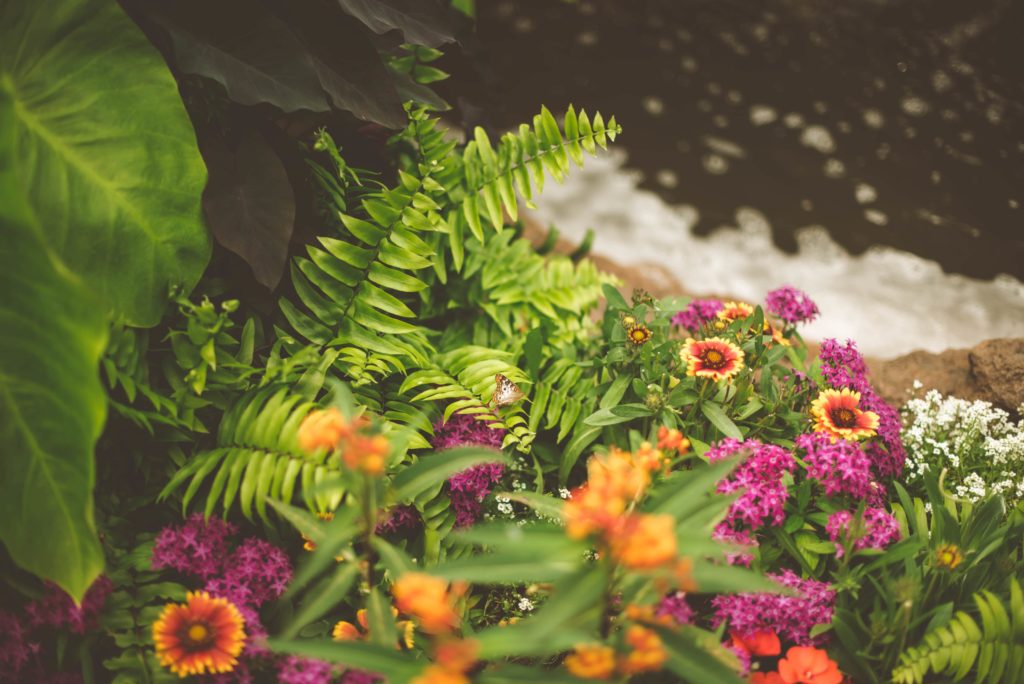Native plants grow easily in Austin as they are able to withstand Austin’s range of climates. Resistant to pests, diseases and drought, needing minimal fertilizer, they preserve our ecosystem, serving as a wonderful habitat and food source for local wildlife. Below we have compiled an Austin gardening guide focusing on Central Texas plants to help you create a beautiful, environmentally-friendly landscape.
The Dirt on Austin
Some people have a natural green thumb. Everything they touch grows, giving the illusion if they dropped a hammer on the ground, it would sprout nails. Here’s a secret for you – great gardening begins with understanding your soil and Austin is home to several different types of soil.
In Pfugerville and east of IH 35, known as the Blackland Prairie, soil feels and looks like black clay, being dense and tightly packed. The water absorbs slowly, making it difficult for plants to root. In West Austin (Edwards Plateau), the soil is thin and shallow due to alkaline limestone, causing the plants grown here to be vulnerable to drought. The soil along the Colorado River and southeast of town, known as the Intermediate Zone, is fertile, absorbing water well, providing an ideal home for growing plants.
To improve your soil, you need compost and depth. Plants need a minimum of 6” to flourish – more always being better. If you are concerned about your soil, Travis County Extension Office has soil testing forms available to have your soil tested.
Native Trees
Planting native trees brings in shade, serves as a home for wildlife and gives your space aesthetic value. Trees in Austin city limits receive protection from the city once they reach between 8”-19” in diameter. Avoid planting trees with fruit near sidewalks or pools because of their large root systems and any fruit they produce and drop can be messy.
Try planting a Desert Willow, which grows well in lots of sunshine and dry conditions. It needs plenty of room to spread out as it grows up to 20 feet tall and 10 feet wide. Because of its size, it provides ideal shade and protection for underplantings. Its beautiful flowers provide food and seeds for wildlife, including Hummingbirds.
If you are looking for a fall favorite, plant a Cedar Elm, which produces vivid gold foliage in autumn months. This deciduous tree is native to both Edwards Plateau and the Blackland Prairie, making it great for those with rocky or poor soils. Hardy and drought tolerant, it grows between 50-70 feet high.
Shrubs
Shrubs serve as a great way to give your yard some landscaping, while bringing in pops of color. They easily cope with the heat when Austin summers begin to scorch many parts of your garden. Plant a variety of textures, shapes and sizes to add depth and anchor your garden, establishing visual weight and balance.
A Butterfly Bush, as the name implies, is a playground for butterflies, boasting of stunning steeple shaped blossoms that cap the tops of this native shrub. Adding color and pollination to your garden from late spring to fall, they require little water, are hardy in winter, and need adequate drainage to thrive.
Try planting a Red Yucca, which serve as shrubs, but are also their own species. These flowering native succulents require very little water and little, if any, maintenance. Their blooms will bring a splash of color to your garden, while attracting hummingbirds and bees.
Perennials
Perennials are a great option for those wanting more bang for their buck, as they return each year. The best time to plant perennials is in the fall, allowing them to take root during Austin’s mild winters and be more established by the time summer arrives. There is a wide variety of native perennials available, making it possible to have something blooming through most of the year.
If you are wanting flowers, try a Hill Country Penstemon. This beautiful perennial loves to be in full sun/part shade, does well in dry or well drained soil, and will give you brilliant red-tubed shaped flowers each spring.
Black-eyed Susans are tough and fuss free, making them an ideal choice for any garden. Though these natives are short growing, only blooming in the summer, they are deer and drought resistant and shade tolerant. Perfect for most landscaping situations, they look stunning when used as a filler among other blooms. Their yellow blossoms are sure to grab your attention and add instant appeal to your garden.
For more information on native Austin plants, check out this guide put together by the city.
Lakeside at Tessera
Whether looking to plant a lush green garden or a Zen garden full of color, enjoy gardening in your dream home at Lakeside at Tessera in Lago Vista. Contact us today for more information.

